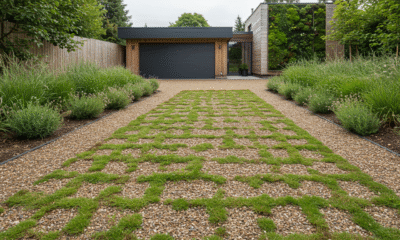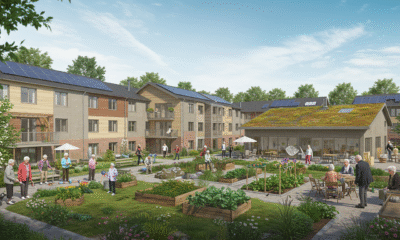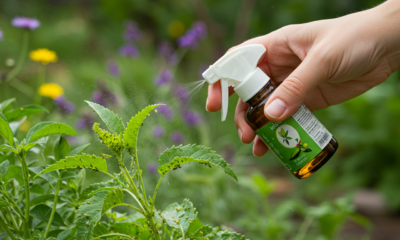

Lifestyle
The Ultimate Guide to Sustainable Living for Beginners
Bill Gates just made a harrowing statement earlier this week. He pointed out that his generation’s grandchildren will grow up in a world that is far worse off is climate change is not addressed.
Many people feel his concerns and are taking new measures to live greener lifestyles. There are many great benefits of doing so, but many people still don’t know what steps to take.
Most people wrongly assume that going green calls for a significant financial investment and a radical lifestyle shift. However, this is not at all the case. If you want to adopt a more sustainable lifestyle, there are many options available to you that don’t require you to make drastic changes in your life. The good news is that almost every part of your daily life—from your mode of transportation to the food you eat and the trash you produce—offers opportunities to live more sustainably. Therefore, here is a guide to sustainable living for beginners that will help you become green.
What Exactly Is Sustainable Living?
Sustainable living is a philosophy that aims to reduce everyday life’s impact on the environment. To live sustainably, you must reduce or eliminate activities harmful to our planet. Sustainable lifestyles are often known as green, low-impact, or even “net zero” lifestyles. When planning and implementing a more environmentally friendly way of life, there is much to think about and do right away. And this is one of the main reasons people are put off by it. However, it’s easier than you might think. You don’t need to install solar panels or grow food immediately. In fact, you never have to do it, and you can still live sustainably. Any action is preferable to none at all. Here are a few approaches you can start using right away.
1. Start Simple, but Start Immediately
Minor adjustments may greatly impact your journey toward a greener lifestyle. You’d be surprised how fast, small changes can add up. For this reason, you shouldn’t feel as though you must make drastic changes immediately. Start with small changes like buying energy-efficient light bulbs and using them, and drinking tap water instead of bottled. It would be best if you also were mindful of how you dispose of things like mattresses and clothing. Additionally, if you are planning to remodel your home soon, you can look for ways to upgrade it in an eco-friendly manner. Most manufacturers offer eco-friendly materials and appliances, so choose those if possible.
2. Think About How You Get Around
Getting around by car or bus is becoming increasingly unfeasible these days. Congestion and large crowds make these modes of transportation much less appealing. All the more reason why you should consider more sustainable alternatives. For instance, some of the simplest methods to travel in a more environmentally friendly manner include walking and cycling. These modes of transportation are beneficial to both the environment and your health. They improve your cardiovascular health and produce no greenhouse emissions whatsoever. In contrast, driving a car with an internal combustion engine is a major contributor to these harmful emissions. However, when distance makes it impractical to walk or ride a bike, other options like public transportation, car sharing, and electric bicycles and scooters are good alternatives.
3. Consider Your Washing Method Carefully
Believe it or not, modern washing machines and dryers have a sizable effect on the environment. This is because they consume considerable amounts of both electricity and water with each load. That being said, there are a number of options available to you that will allow you to wash your clothes in a more eco-friendly manner:
- Wash clothes in water no hotter than 30 degrees.
- Wear your clothes for longer
- Change your washing machine from a top loader to a front loader
- Select shorter washing cycles – yours may even have an eco or time-saving option.
- Use natural detergents if possible
4. Avoid Single-Use Plastics
When it comes to pollution, plastic is one of the worst offenders. In particular, disposable plastic items like straws, coffee cups, and shopping bags. Over 385 million metric tons of plastic were manufactured last year. And the worst thing is, it’s not getting better, as this number has apparently nearly doubled since then. There is some hope, however, because both individuals and businesses are beginning to make adjustments. More and more people are opting for having access to reusable options. This includes things such as glass or metal straws, reusable coffee mugs, and a variety of cloth or canvas grocery bags.
5. Cut Down on Food Waste
It is estimated that 30–40% of the food produced in the United States is thrown away as waste. This means that Americans will have wasted around 133 billion pounds of food in 2022. It’s the equivalent of forgetting to take home a quarter of your weekly food every time you shop. You may reduce the trash your household sends to the dump by composting at home. You will reduce the amount of methane gas produced by producing less waste. This is essential for keeping the air clean and the environment safe. To do this, all you have to do is purchase a compost bin. However, if you decide that composting at home isn’t for you, check to see if your city or town offers a composting service. However, if none of these options are feasible for you, you can always ensure that you only buy what you need. Don’t overstock the refrigerator and let food rot in the cupboards.
Conclusion
With a guide to sustainable living for beginners, you won’t have any issues making the necessary changes to reduce your carbon footprint and improve your quality of life. That being said, to conclude, we must also mention why going green is so important. If we don’t protect our planet, future generations will have a lower quality of life, we’ll run out of natural resources, and countless animal species will perish. Without immediate action, we face some very real risks. The good news is that sustainable lifestyles are at the heart of this shift. Everyone can play a role in preserving the planet in their own way. Learning the basics of sustainable living doesn’t have to be difficult at all. As time goes on, sustainability will become a necessity if we want to preserve life on Earth.
































